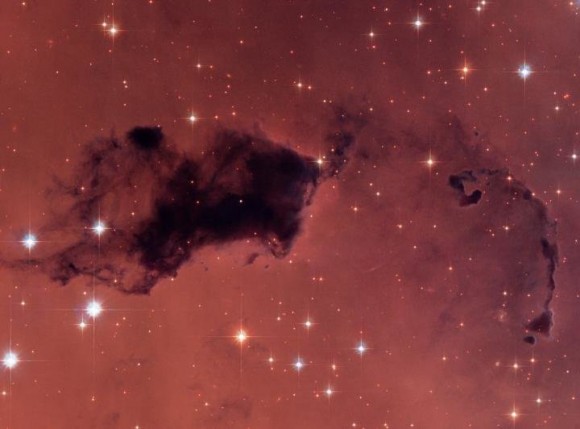
How soon after the Big Bang could water have existed?
Not right away, say scientists, because water molecules contain oxygen, and oxygen had to be formed in the first stars. Then that oxygen had to disperse and unite with hydrogen in significant amounts.
But despite these complications, water vapor could have been just as abundant in pockets of space a billion years after the Big Bang as it is today. That’s according to a new study by a team from the Harvard-Smithsonian Center for Astrophysics (CfA) and Tel-Aviv University.
Avi Loeb is an astrophysicist at the Harvard-Smithsonian Center for Astrophysics (CfA). Loeb said:
We looked at the chemistry within young molecular clouds containing a thousand times less oxygen than our sun. To our surprise, we found we can get as much water vapor as we see in our own galaxy.
The early universe lacked elements heavier than hydrogen and helium. The first generation of stars are believed to have been massive and short-lived. Those stars generated elements like oxygen, which then spread outward via stellar winds and supernova explosions. This resulted in “islands” of gas enriched in heavy elements. Even these islands, however, were much poorer in oxygen than gas within the Milky Way today.
The team examined the chemical reactions that could lead to the formation of water within the oxygen-poor environment of early molecular clouds. They found that at temperatures around 80 degrees Fahrenheit (300 Kelvin), abundant water could form in the gas phase despite the relative lack of raw materials.
Although ultraviolet light from stars would break apart water molecules, after hundreds of millions of years an equilibrium could be reached between water formation and destruction. The team found that equilibrium to be similar to levels of water vapor seen in the local universe.
This current work calculates how much water could exist in the gas phase within molecular clouds that will form later generations of stars and planets. It doesn’t address how much water would exist in ice form (which dominates within our galaxy) or what fraction of all the water might actually be incorporated into newly forming planetary systems.
This work has been accepted for publication in the Astrophysical Journal Letters and is available online.
Bottom line: According to a new study by a team from the Harvard-Smithsonian Center for Astrophysics (CfA) and Tel-Aviv University, water vapor could have been just as abundant in pockets of space a billion years after the Big Bang as it is today.











